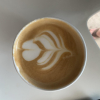Edited by RelientUKDr, July 8 2020 - 8:33 AM.
- Formiculture.com
- Forums
- Gallery
- Members
- Member Map
- Chat

Edited by RelientUKDr, July 8 2020 - 8:33 AM.
Wow. Nice haul ![]()
I actually have two Formica queens that I saved from the pool. They were still very much alive when I caught them, however.
Brachymyrmex are highly polygonous.
Yes, they are. Were you (ReliantUKDr) thinking of another genus?
"God made..... all the creatures that move along the ground according to their kinds (including ants). And God saw that it was good. Genesis 1:25 NIV version
Keeping:
Tetramorium immigrans Camponotus vicinus, modoc, novaeboracensis, herculeanus
Formica pallidefulva, argentea Solenopsis molesta
Formica cf. aserva Lasius brevicornis, neoniger
Yes, they are. Were you (ReliantUKDr) thinking of another genus?Brachymyrmex are highly polygonous.
Yes, they are. Were you (ReliantUKDr) thinking of another genus?Brachymyrmex are highly polygonous.
Interesting...I was reading about B. patagonicus on the UF entomology site and they state polygyny hasn’t been observed in the wild and high levels of inter colony aggression. Do you think it would be ok to combine a few?
http://entnemdept.uf...k_rover_ant.htm
A member by the name of Ender Ants has groups of up to 19 queens. Based on his journals they seem to progress faster in smaller groups like groups of 3. Some of the small groups had workers or pupae while the group of 19 had eggs and larvae. I suggest combining a few. Also, that website does state that in laboratory conditions they will form polygonous colonies. And as I stated, it does work in normal captive environments as well.
Edited by Kaelwizard, July 8 2020 - 12:50 PM.
0 members, 0 guests, 0 anonymous users